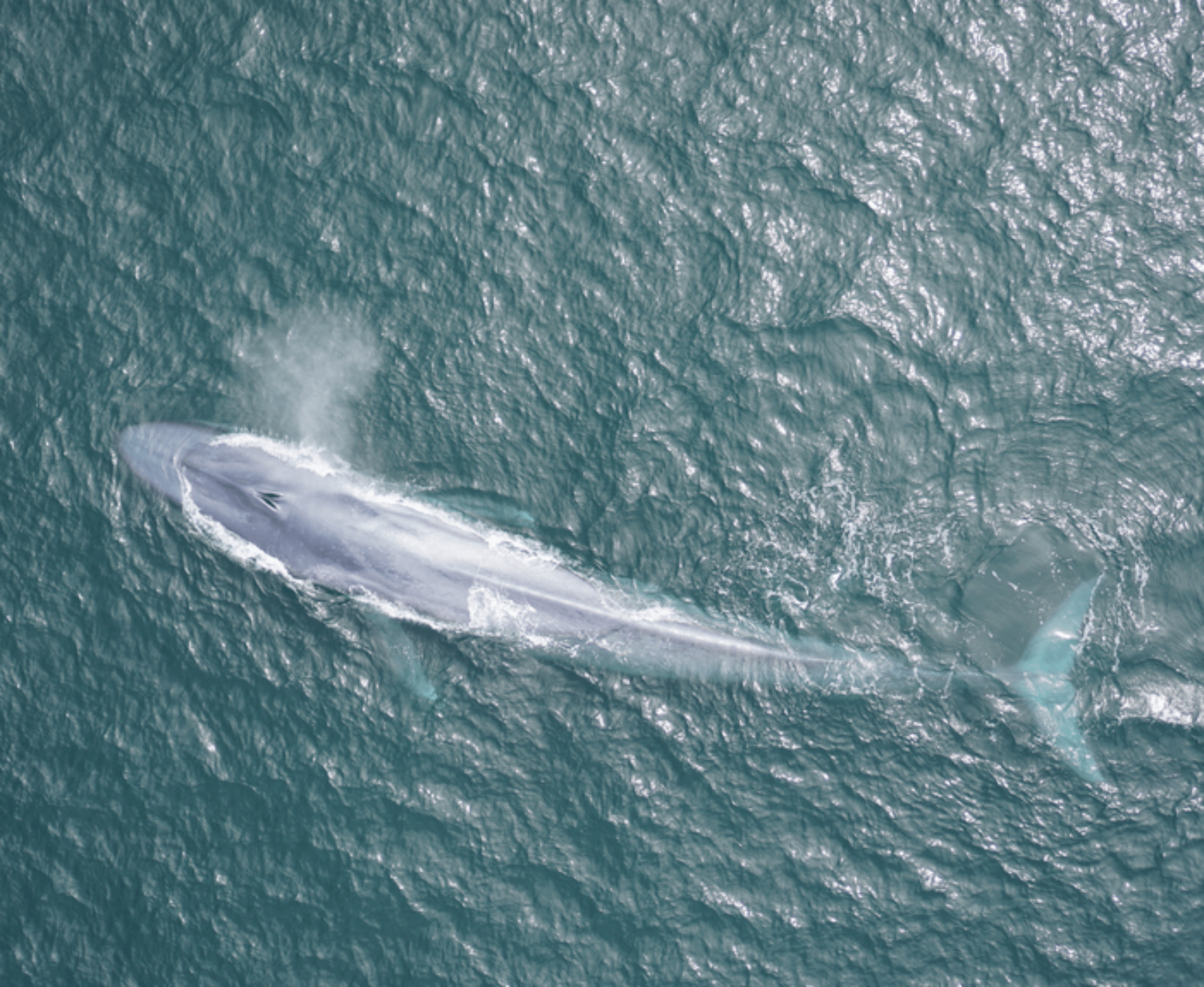

Bigger than even the largest dinosaurs, blue whales (Balaenoptera musculus) are mysterious and elusive—surviving mainly on tiny crustaceans called krill and leaving many unanswered questions about their ecology and biology. They are found all over the world, except the Arctic Ocean, and their movements are based on two main events: time to breed and time to feast on their favorite crustaceans. In the eastern Pacific Ocean, these whales spend their winters off the coast of Mexico and Central America, and then can travel up to 30 miles per day on their migration north towards California in the summer.
Beyond their incredible size and speed, the blue whale also makes some pretty unique noises. The creature’s unique calls, however, might just be spilling one of their most hidden secrets. in the journal Ecology Letters, a team of researchers used a directional hydrophones in MBARI’s underwater observatory (kind of an underwater scientific podcast studio that records the sounds of the Pacific) to listen for blue whale vocalizations. The team used these sounds to track the blue whales’ movements, and learned that they respond to changes in the wind to forage for food.

“The blue whale gives us such phenomenally useful, clear information for understanding them,” John Ryan, lead biological oceanographer at Monterey Bay Aquarium Research Institute (MBARI) and lead author of this study, tells Popular Science. “I feel like the blue whale is collaborating with us to help us understand them by putting sound into the ocean that is so effective for research that can help us understand and protect them.”
[Related: World’s largest shipping company reroutes ships to protect world’s largest animals.]
During the spring and summer, upwelling occurs in the Pacific Ocean off California’s central coast. This weather phenomenon is when wind pushes the top layer of water further out to sea, while the colder water below rises to the surface. Tiny phytoplankton rises along with the cooler, nutrient-rich water, jumpstarting the food web in Monterey Bay. According to the study, when these seasonal winds create an upwelling event, blue whales seek out the plumes of cooler water, where krill are most abundant using the winds and upwelling as their guide. The whales move offshore closer to shipping lanes when the upwelling stops and the plumes of food go away. They basically use the wind as a partner to find food.
The team used directional hydrophones and instruments to identify the direction the sounds are coming from. “Beyond the hydrophone is the accelerometer that measures water velocity, and particle motion. From that, we can go beyond saying ‘that was a blue whale’ to ‘that was a blue whale, and the sound came from over there,'” Ryan says.
To help corroborate that it was actually a blue whale making noise, researchers from Stanford University placed temporary suction cup trackers on the whales. The team then matched the recordings and the whales’ position using GPS. With confidence in the acoustic methods established, the research team examined two years of acoustic tracking of the regional blue whale population.
[Related: Biologists vastly underestimated how much whales eat and poop.]
Previous research had already found that swarms of anchovies and krill (called forage species) reacted to coastal upwelling by swarming the plumes. Using these insights, the team combined krill movement data with the acoustic tracks of foraging blue whales. “When coastal upwelling was strongest, anchovies and krill formed dense swarms within upwelling plumes. Now, we’ve learned that blue whales track these dynamic plumes, where abundant food resources are available,” Ryan says.
The research shows that blue whales can recognize when the wind is changing their habitat and then find places where upwelling aggregates krill. It is crucial that these 165 ton animals find dense groups of krill to survive, since they can eat up to 2 million metric tons of krill per year. The whales closely track the upwelling process to maximize their snack time.
Blue whales are still considered endangered, and their proximity to shipping lanes and vessel strikes remains a threat to their recovery. A 2019 study shows that blue whales are particularly vulnerable to ship strikes, since they do not perform any lateral movements to get out of the way, but instead dive down not realizing that how deep ships sink into the water. Research like this will help scientists understand where the blue whales and the food they are tracking are and help enact better conservation efforts, like speed restrictions for vessels.
“The surprise was, how much time they spent offshore in habitat that is translated by shipping lanes, which represents a primary threat to their survival and recovery as an endangered species,” Ryan says. “We need to take this technology to other regions, because we’ve tried it in one area where we happen to have a listening range.”
